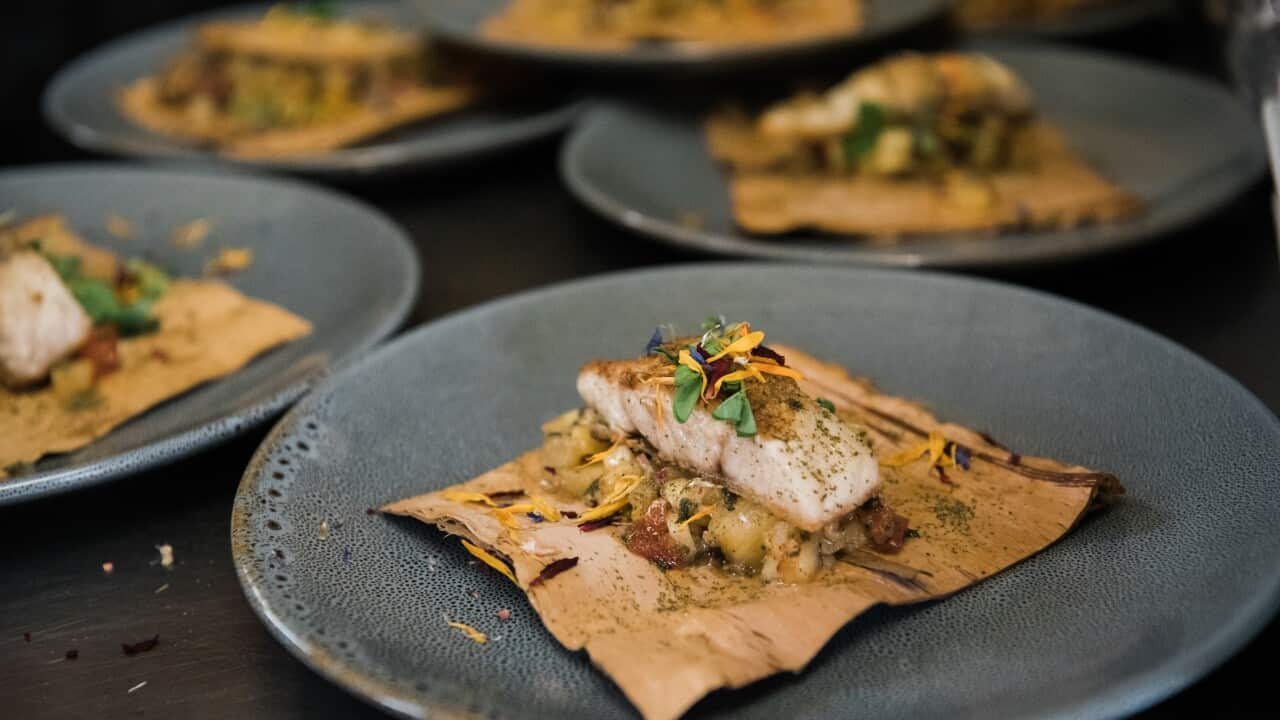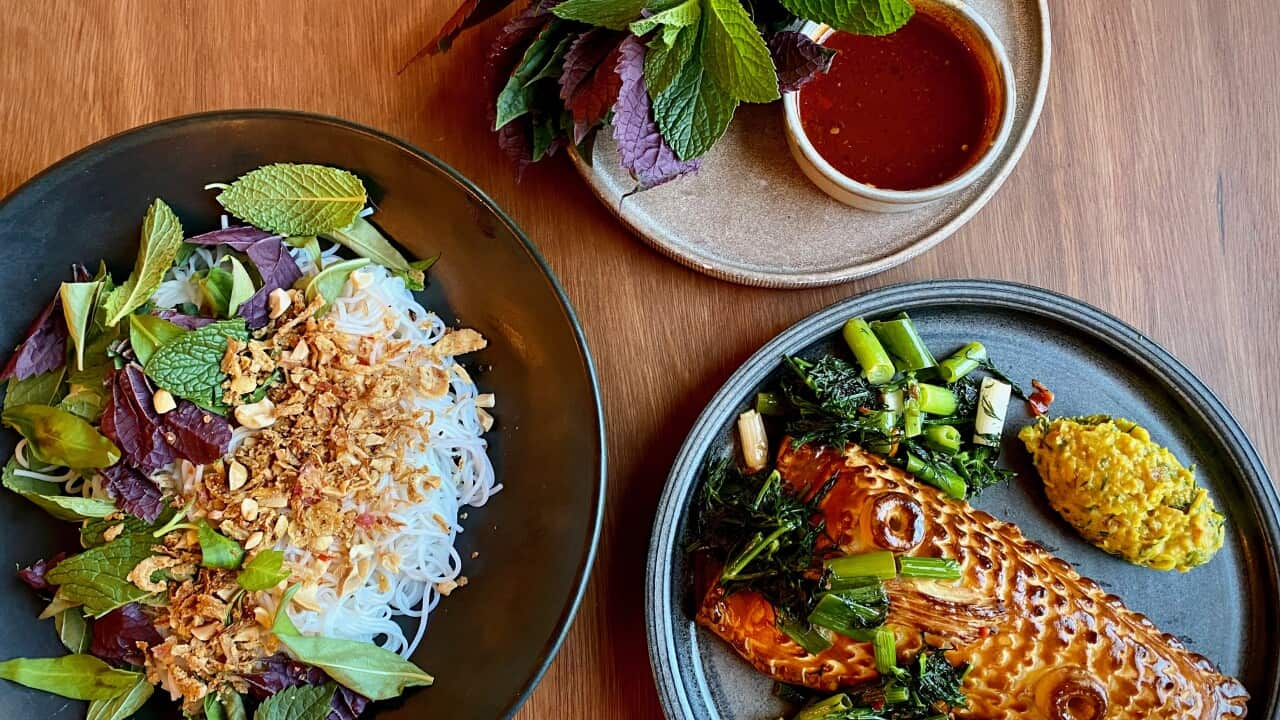NAIDOC Week is a national celebration of Aboriginal and Torres Strait Islander peoples, history and culture, and runs from July 8-14. Join the conversation #NAIDOC2024 As the National NAIDOC Principal Media Partner and official Education Partner, National NAIDOC Week will be celebrated across all SBS channels and platforms, including an exclusive NAIDOC collection of series and films available to stream on SBS On Demand and NAIDOC education resources via .
Cherished childhood food memories are made of long-awaited desserts, the moments you spent licking sweet remnants out of a warm tin and the oven-baked treat that spoiled your senses rotten.
Sharon Winsor, the founder of the Aboriginal native bush foods supplier , remembers the magical feeling of tasting her mother’s dessert staple, bread and butter pudding, when she was about four years old.
“Growing up, we didn’t have much money,” says Winsor, the proud daughter of an Aboriginal mother, descending from Gulargambone NSW. “So bread and butter pudding was the dessert we had after dinner in winter if we had a treat... Sometimes, mum used to make her own butter using the milk from the cow we had and that would be used for the bread and butter pudding.
“I would help mum make the dessert in big trays and we'd then cook it in the oven. We'd have it with some custard or a bit of ice cream, but most of the time I just ate it straight out of the pan.”
We'd have it of with some custard or a bit of ice cream, but most of the time I just ate it straight out of the pan.
As decadent as bread and butter pudding was to the young Winsor back then, she says the reality was that her mother made the dessert because “it was a very cheap and easy, comfort dish”.
“We were never actually told that we were poor,” Winsor says, reminiscing about her upbringing in the bush between Gunnedah and Coonabarabran NSW.
“I actually thought that everyone lived the way that we did. I loved the way we lived and I just loved my house so much that I never wanted to leave to go other people’s places.”
Winsor tells SBS she also used to collect and regularly feast on native foods, as a part of day-to-day life. “Native foods were what we survived on – whether that meant that we went out and caught yabbies or picked native fruits nearby. This upbringing around native foods was what inspired my passion for natural foods and bush foods as an adult.”
That passion has indeed never left Winsor, the owner of a 25-year-old business selling premium bush foods made from ethically sourced and sustainably harvested Australian native products.
“Native ingredients are where my heart and soul are at. These ingredients are so connected to Mother Earth that you can taste it in their flavour…Native foods are also very much part of Indigenous identity. They are in our DNA and help to make us who we are.”
Native ingredients are where my heart and soul are at.
Wattleseed for depth and meaning
Winsor explains that as time passed and her business developed, she did more with native foods. For a while, she ran an Indigiearth cafe; she also founded the Warakirri dining experience, which offers a five-course degustation featuring Australian native foods and culture.
“I also started putting more native ingredients into recipes that I grew up with. Bread and butter pudding with native wattleseed is one of them. The dish is something that I've taken from my childhood and incorporated native foods into the recipe [to represent who I am now].”
The addition of wattleseed gives the dessert more depth of flavour, while providing the dish with an enhanced connection to Mother Earth.
“There are over 1000 different varieties of wattleseed in Australia,” she says. “Not all of them are edible. The ones assigned for food purposes obviously are.
“But to prepare wattleseeds you can eat [for consumption], you need to grind and roast them first as they contain toxins. The heating process releases the toxins so they become safe to eat. The heat also enhances the flavour of the food. They have a rich chocolate hazelnut, coffee flavour.”
Beyond the taste, Winsor says, incorporating the native ingredient into the dish gives the dessert greater cultural significance.
“Wattleseeds have 60,000 years of [Indigenous] knowledge in them. That’s what is so powerful.
“Bread and butter pudding with wattleseed makes me feel proud. The dessert still reminds me of my childhood but by adding wattleseed to the dish and infusing it with a native flavour, it now has more meaning.”
Wattleseed bread and butter pudding
Serves 4-6
- 1 ½ cup (375 ml) milk
- 2 cupS (500 ml) cream
- ⅓ cup (75 g) caster sugar
- 1 tsp vanilla extract (optional)
- 4 eggs
- 1 tbsp ground roasted wattleseed
- 6 slices (270 g) white bread
- 40 g butter, softened
- ½ cup (80 g) sultanas
- ¼ tsp ground nutmeg
Method
- Preheat oven to 160°C (140°C fan-forced). Grease shallow 2-litre (8-cup) ovenproof dish.
- To make the custard, combine the milk, cream, sugar and extract in a medium saucepan; bring to a boil. Whisk the eggs in a large bowl. Gradually add the hot milk mixture to the egg mixture while whisking constantly.
- Trim crusts from bread if desired ( I prefer crusts on). Spread each slice with butter; cut into four triangles. Layer the bread, overlapping, in the dish; sprinkle with sultanas & the roasted wattleseed. Pour custard over the bread; sprinkle with a bit more wattleseed.
- Place the ovenproof dish in a large baking dish. Add enough boiling water to come halfway up the sides of an ovenproof dish. Bake for about 45 mins or until the pudding is set. Remove pudding from baking dish; stand 5 minutes before serving.
- Serve with a dollop of cream or ice cream. Sprinkle with icing sugar if desired.
FEELS LIKE HOME

Feels like home: Junda Khoo makes his Amah’s fish curry









